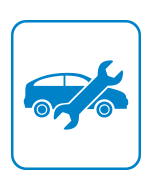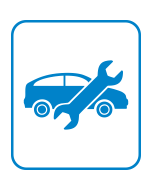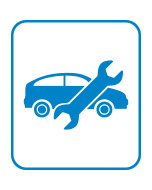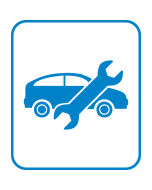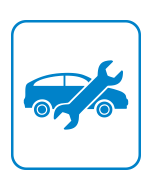Strategic Analysis of the Fiat Chrysler Automobiles and PSA Group Merger
Strategic Analysis of the Fiat Chrysler Automobiles and PSA Group Merger
With $170 Billion in Revenue, 8.5 Million in Vehicle Sales, $6.5 Billion in R&D Potential and $4 Billion in Synergies, the FCA-PSA Merger is Poised to Give Strong Competition to Global Automakers
19-Nov-2020
North America
Description
The proposed merger between the Fiat Chrysler Automobiles (FCA) and the PSA Group is one of the most significant mergers among automotive original equipment manufacturers (OEMs). The merged company will be called "Stellantis "and will become the fourth-largest automotive OEM in terms of sales volume. This mega consolidation is driven by the need for investment in connected, autonomous, shared, and electric (CASE) technologies and the demand for reduced redundancies and improved profitability. This merger highlights the extent of fundamental change sweeping the industry, calling for OEMs to come together and stand firm against the disruption wave.
Both PSA and FCA have a strong history and legacy in the automotive industry, which has unfortunately contributed to their struggling market position in the modern automotive era. Both groups had focused on the crowded European market in the low-margin, small car segment. Their presence in North America was nearly non-existent before Fiat joined Chrysler after its 2009 bankruptcy. Unlike other global auto companies, PSA and FCA did not act quickly in entering the Chinese market and failed to respond to the massive auto demand from this country.
Additionally, when most automotive OEMs were increasing their R&D budget, PSA and FCA struggled to cope with market competition and technology development due to limited capital. Group PSA presented ambitious plans for CASE technologies; however, the company needed more cash and was scouting for partners to compete with other OEMs. FCA is a late entrant in the electrification segment and lacks the technical strength to compete with its peers. Thus, this merger is not a surprise but a need of the hour for both companies.
The new group, Stellantis, will have combined revenue of over $170 billion and an operating profit margin of 6.5%. The expected synergy is approximately $4 billion. The combined annual R&D potential is more than $6.5 billion per year, which is a fair amount to invest in electrification and other technologies. Stellantis will also be the largest van maker and third-largest SUV manufacturer globally. These numbers will ensure Stellantis' long-term life in the automotive industry, which would have been challenging had PSA and FCA been operating in isolation. These numbers are also on par with the top 3 automotive groups, namely VW, Toyota, and Renault-Nissan-Mitsubishi.
Although PSA and FCA have many overlapping vehicle segments, what might nullify this is their operation region. Approximately 65% of FCA's revenue comes from North America, whereas PSA is stronger in Europe. PSA's aftermarket portfolio of online and offline businesses, combined with FCA's MOPAR will create more growth opportunities for both brands. Although the merger promises economies of scale, complementary strengths, and improved efficiency, it remains to be seen if this will suffice. Even after all the regulatory clearance and binding agreement execution, the risks associated with combining two sizeable entities will remain.
Stellantis is expected to appoint Carlos Tavares as its CEO for the first five years. Tavares is a turnaround expert and is known for breaking the status quo. He is considered the best chance for both companies to regain their position in the auto industry. It will be interesting to see how Tavares transforms two 120-year-old automakers and readies them for a new electrification era, mobility, and geographic expansion. The CEO will have to tackle more than 13 vehicle brands, several plants and R&D centers, and hundreds of thousands of employees.
Frost & Sullivan's assessment of the FCA-PSA merger looks closely into the implications of the consolidation, emerging growth opportunities, and challenges before the two OEMs. The report provides a brief overview of each company's strengths and weaknesses in various segments, such as vehicle brands, regional stability, vehicle platforms, aftermarket business, and partnerships in developing connected and autonomous technologies. The study also provides a point of view of expected changes that the newly merged company will implement across these segments.
RESEARCH: INFOGRAPHIC
This infographic presents a brief overview of the research, and highlights the key topics discussed in it.Click image to view it in full size

Table of Contents
Why is it Increasingly Difficult to Grow?
The Strategic Imperative 8™
Impact of the Top Three Strategic Imperatives on FCA–PSA Merger
Growth Opportunities Fuel the Growth Pipeline Engine™
PSA-FCA Merger—Rationale Behind the Consolidation
Potential Synergies from the Merger—A Golden Handshake
Stellantis will Leverage Complementary Brand Strength of FCA and PSA
PSA’s 2 Platform will Drive Platform Strategy for Stellantis
PSA’s European Facilities will Accelerate the Electrification of Stellantis’ Brands
Autonomous and Connected Technology Development
Focus on Core Markets and Entry into New Geographies
Building an Omni-channel Ecosystem for the Aftermarket
Multi-brand, Phygital, and Digital will be Key Features of Stellantis’ Retail Strategy
FCA—Foxconn Partnership and Analysis
Stellantis––A Global Automaker in the Making
Stellantis––A Peek into the Future
Challenges Ahead for Stellantis
Key Conclusions
Growth Opportunity: Leveraging Each Other’s Complementary Strengths for Global Expansion
Growth Opportunity: Leveraging Each Other’s Complementary Strengths for Global Expansion (continued)
List of Exhibits
Legal Disclaimer
Key Leadership—CEO of Stellantis
| No Index | No |
|---|---|
| Podcast | No |
| Author | Shruti Pathak |
| Industries | Automotive |
| WIP Number | MFDD-01-00-00-00 |
| Is Prebook | No |
| GPS Codes | 9800-A6,9807-A6,9813-A6,9883-A6,9AF6-A6 |
 USD
USD GBP
GBP CNY
CNY EUR
EUR INR
INR JPY
JPY MYR
MYR ZAR
ZAR KRW
KRW THB
THB